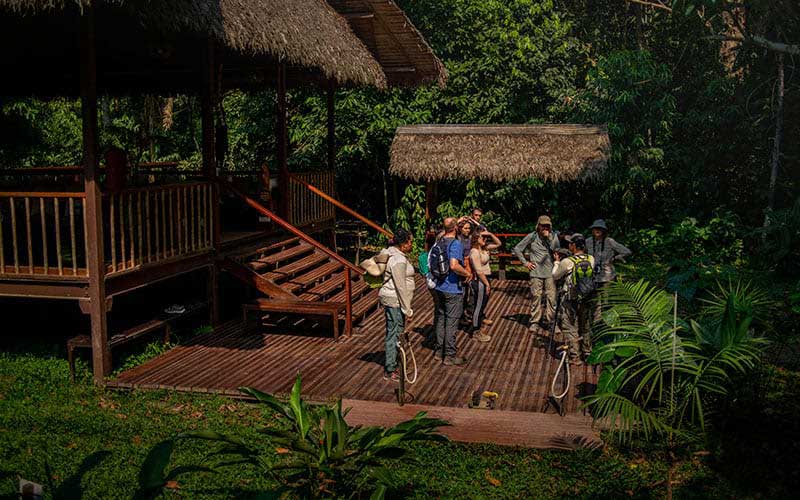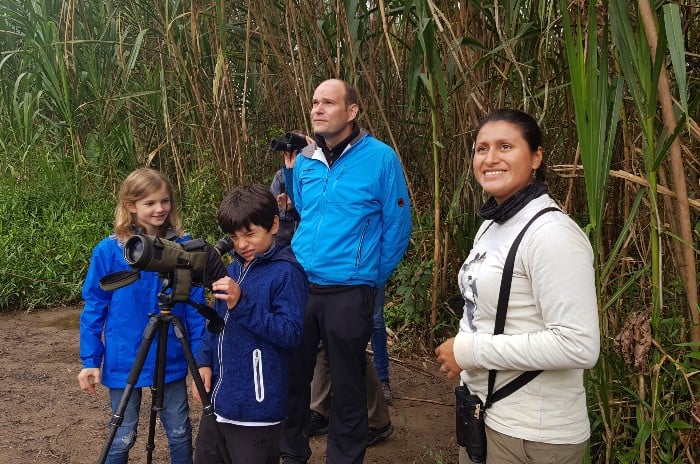
In the wake of the prolonged pandemic, there has been a noticeable surge in the yearning for immersive and meaningful journeys. For those fortunate enough to plan a 5-day trip, the TRC lodge emerges as an ideal option in Peru's rainforest. Nestled in a remote location TRC embodies an inspiring conservation initiative rooted in a noble mission to safeguard and revive the endangered macaw population in the region. By choosing to stay at TRC lodge, you actively contribute to this vital conservation effort while exploring pristine forests and get the latest insider knowledge that is transmitted from the on-site researchers to the field guides.
Curiosity piqued? Allow us to share our own firsthand experience at TRC lodge in Peru's captivating rainforest joined by two curious kids.
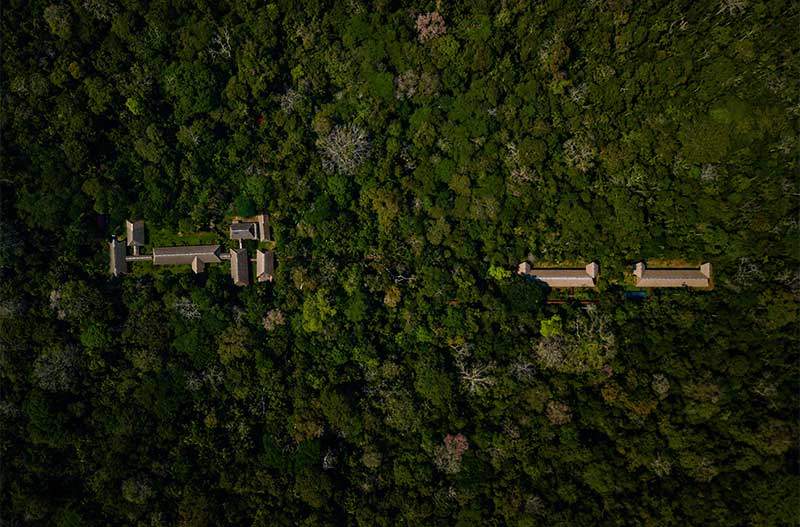
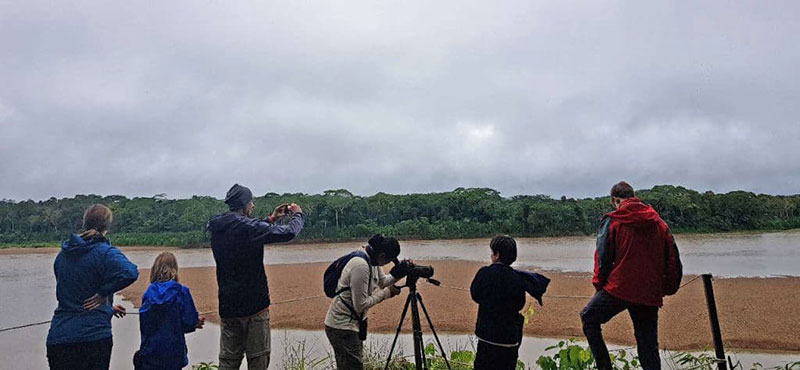
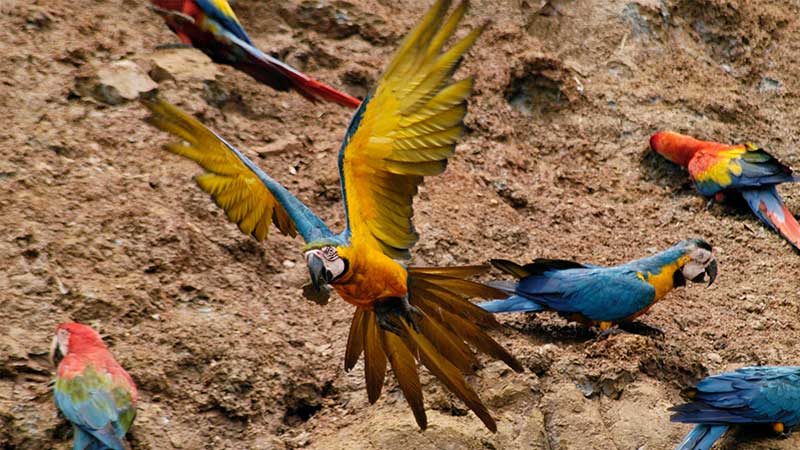
For the little ones interested in conservation science and wildlife, TRC offers one child, up to 12 years old, a free stay when sharing the room with their parents (to which we would recommend booking the 55m² suite with enough space for an extra bed).
10 seconds of video speak louder than 1000 words. Here's a short video of TRC and its macaws.
Originally built as a station for researchers working at the Macaw Preservation Project, TRC progressively became a small and basic lodge (with only common shared bathrooms) for nature lovers. Due to its remote location in the Tambopata National Reserve and the Macaw Project, TRC have hosted dozens of researchers, filmmakers, and photographers. The highlight of a stay at TRC is the visit to the Colorado Macaw Lick, one of the largest in South America, located just 300 meters from the lodge itself.
A 40-minute flight connects Cusco with the Puerto Maldonado Airport, the starting point for the journey to Tambopata Research Center. In the past, it was required to spend the first night at the Refugio Amazonas Lodge, located about halfway from TRC. This was our case too.
Though, the lodge has launched a faster outward journey a few months ago. Consequently, guests no longer need the overnight at Refugio Amazonas Lodge. Upon arrival at Puerto Maldonado Airport, you begin a 1-hour journey by road before boarding a boat at the Filadelfia river port for the remaining 2.5-hour journey along the Tambopata River.
Our outward journey included our first sightings of alligators and capybaras. After a 2-hour flight delay, the light meal our guide handed us out was a ‘heaven-sent’ gift.
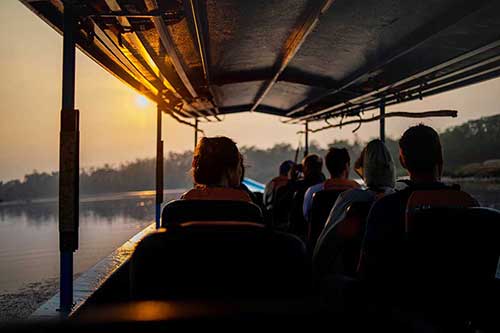
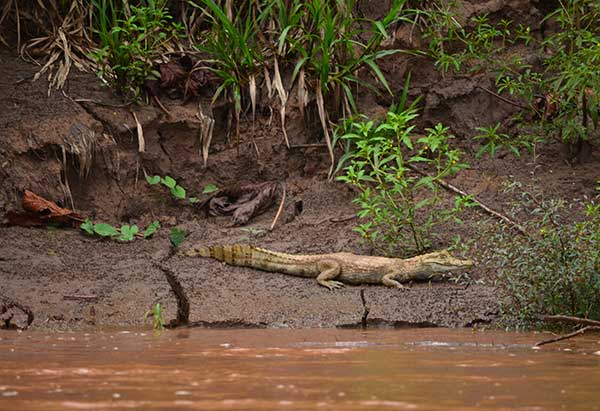
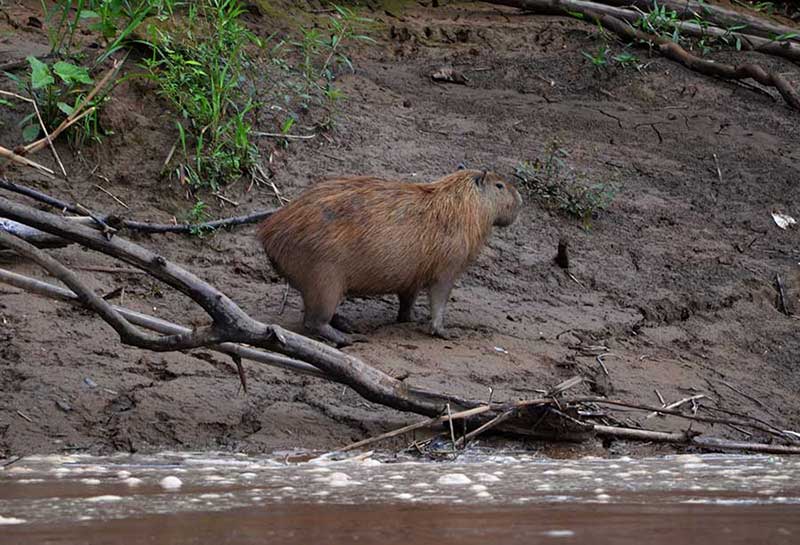
TRC offers 1 daily departure from Puerto Maldonado Airport. Please be sure to arrive in Puerto Maldonado before 1:30 PM. The shuttle service is shared with other travelers. When planning your trip back, make sure your flight leaves after 12:30 midday (the departure from TRC is at 07:30 AM).
Maximum weight allowed per person is 15 kg. A short stop-over upon arrival is done at the lodge's office in Puerto Maldonado to leave the extra luggage.
It was easier for us all to remember the names of the wildlife we spotted thanks to the checklist the lodge had prepared for its guests. Below are some of our shots of the wildlife we spotted, including the jaguar we casually caught sight of along the shore, on our way back to the Puerto Maldonado airport.
The lens I used for the pictures below was a 55-200mm AF-S Nikor.
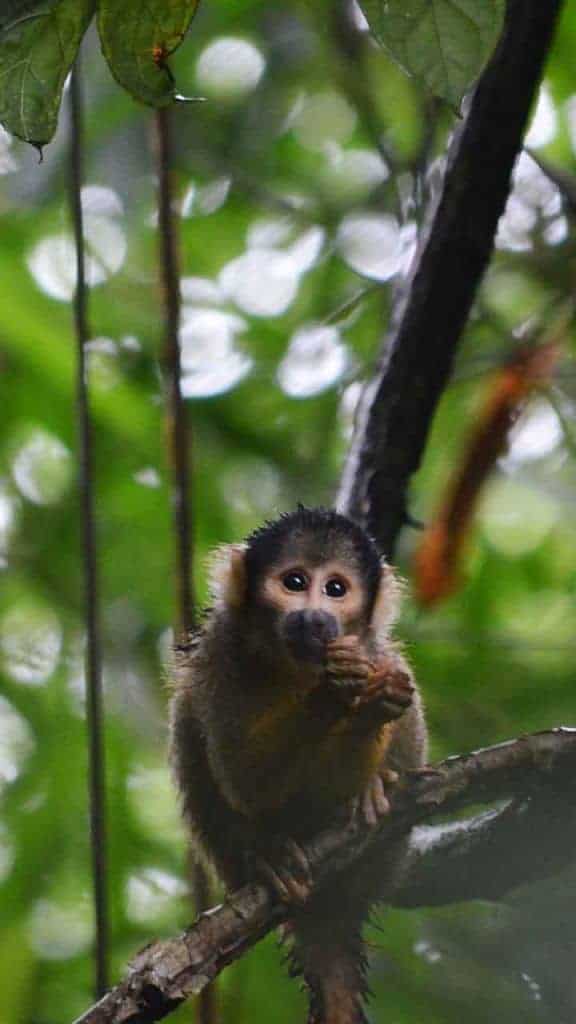
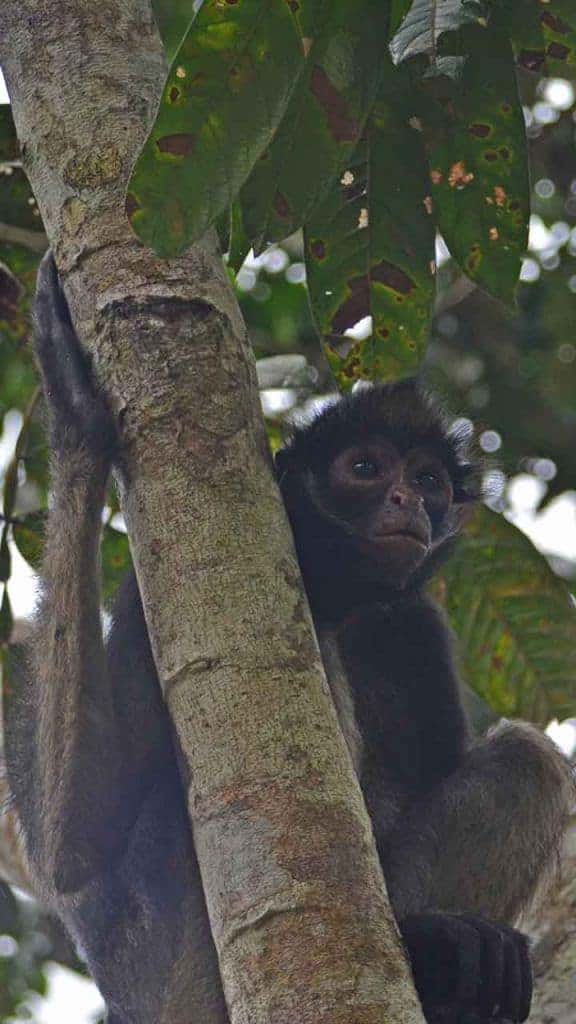
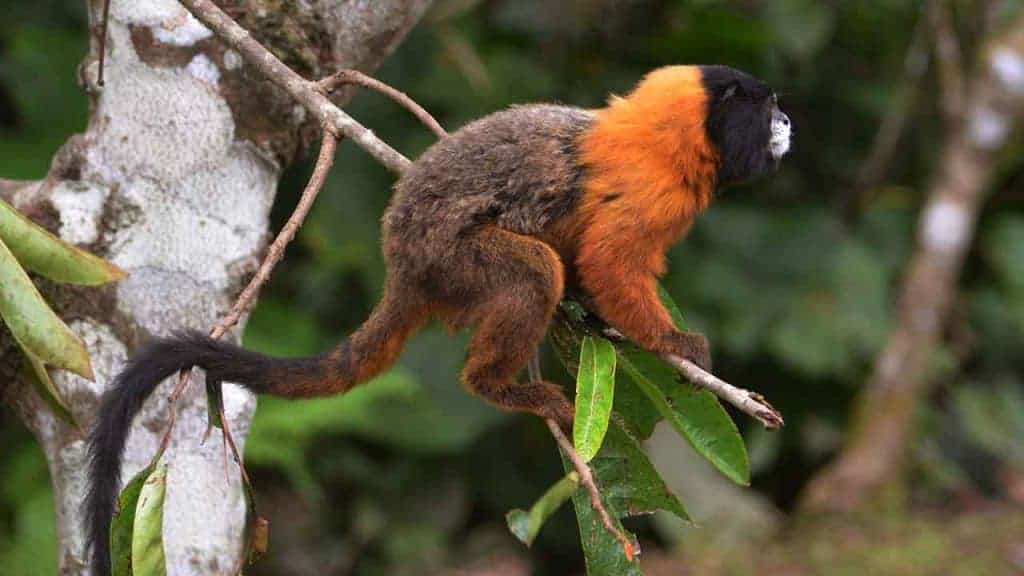
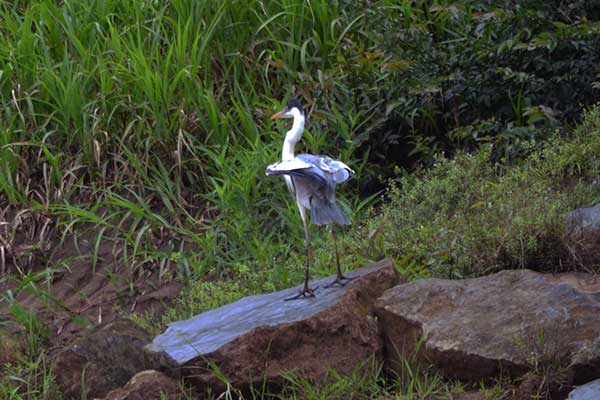
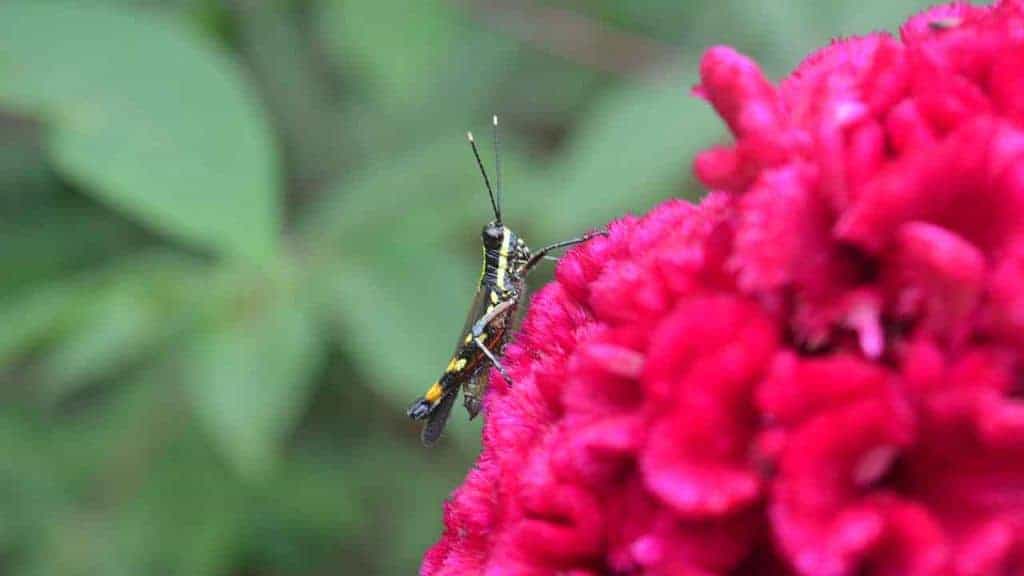
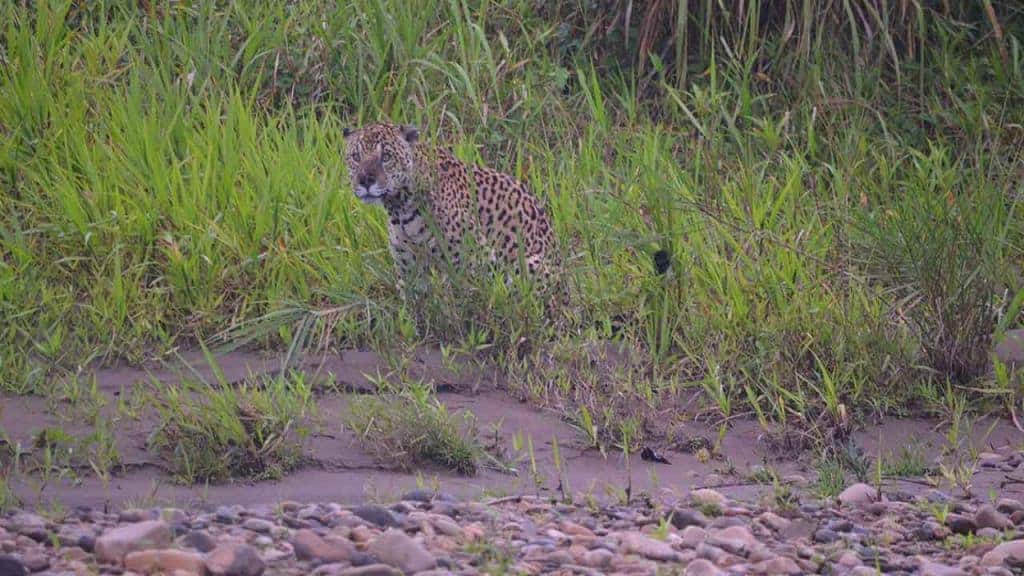
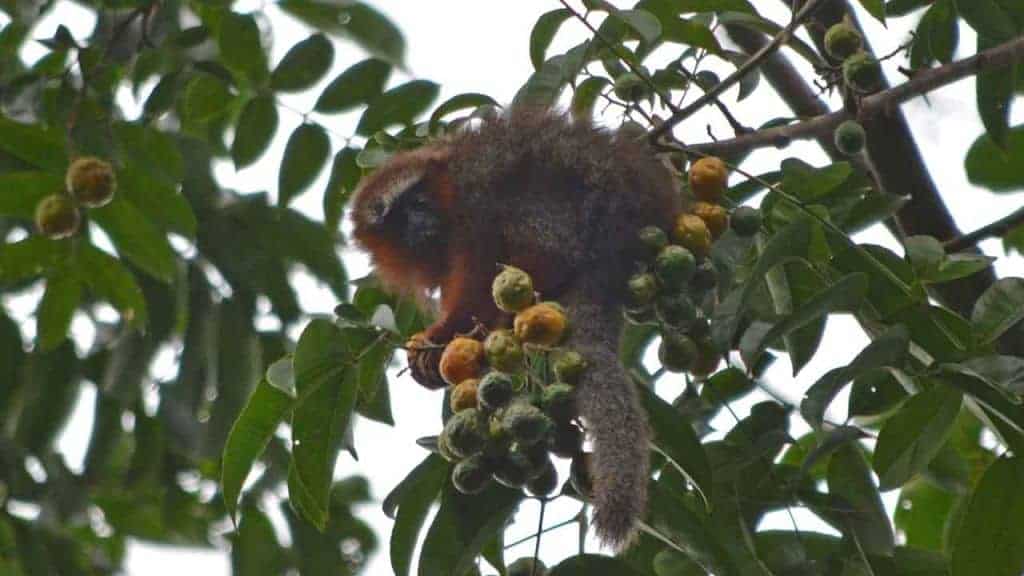
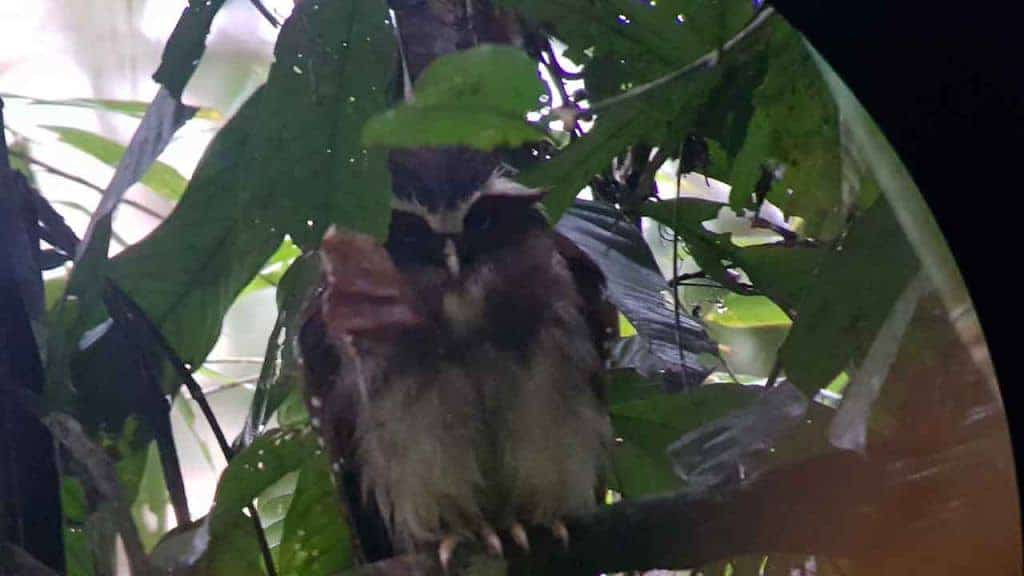
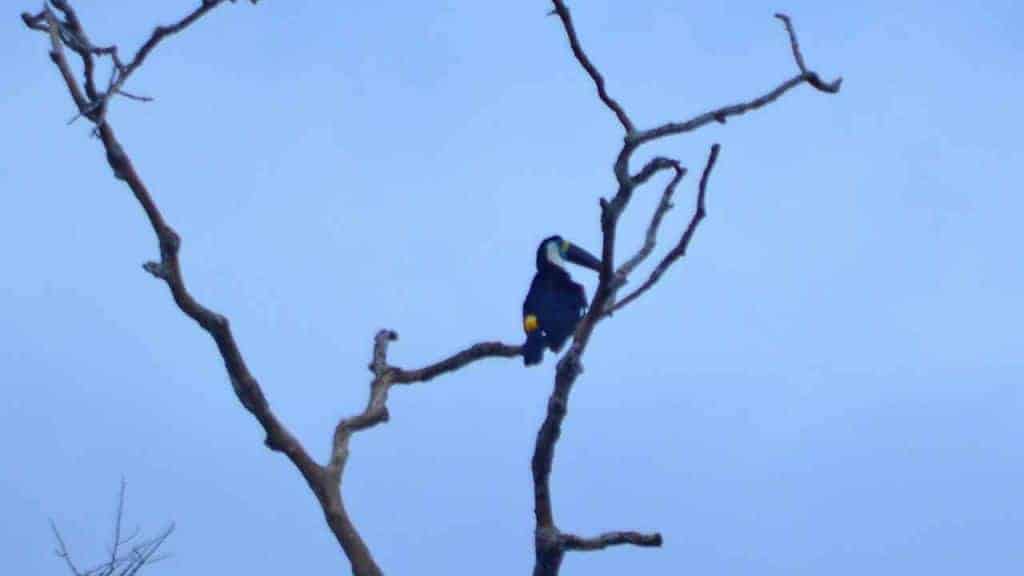
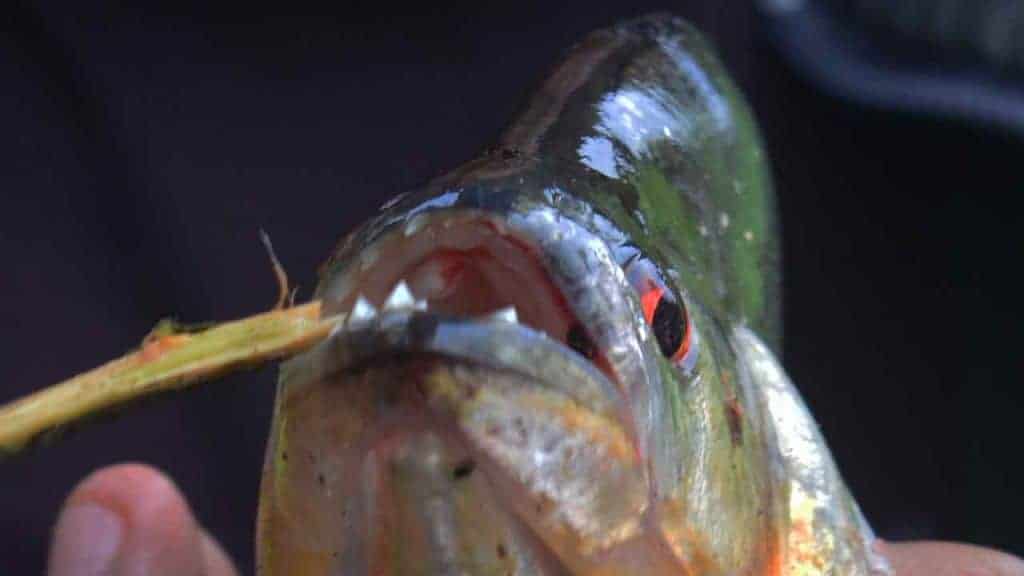
Unless you bring a telescopic or long lens along with you, you won’t be able to get close-up shots of the macaws at the clay lick. Although, our guide was amazing in this regard and showed our kids how to take cool pictures with their cameras using her telescope.
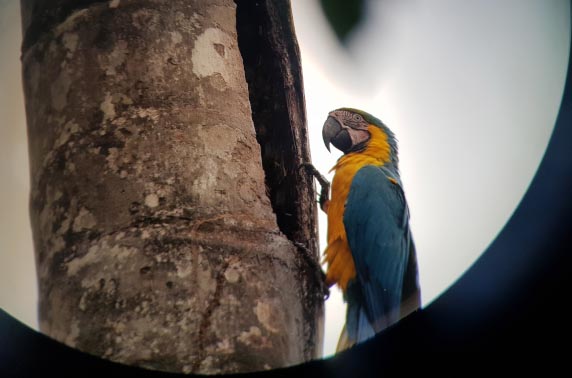
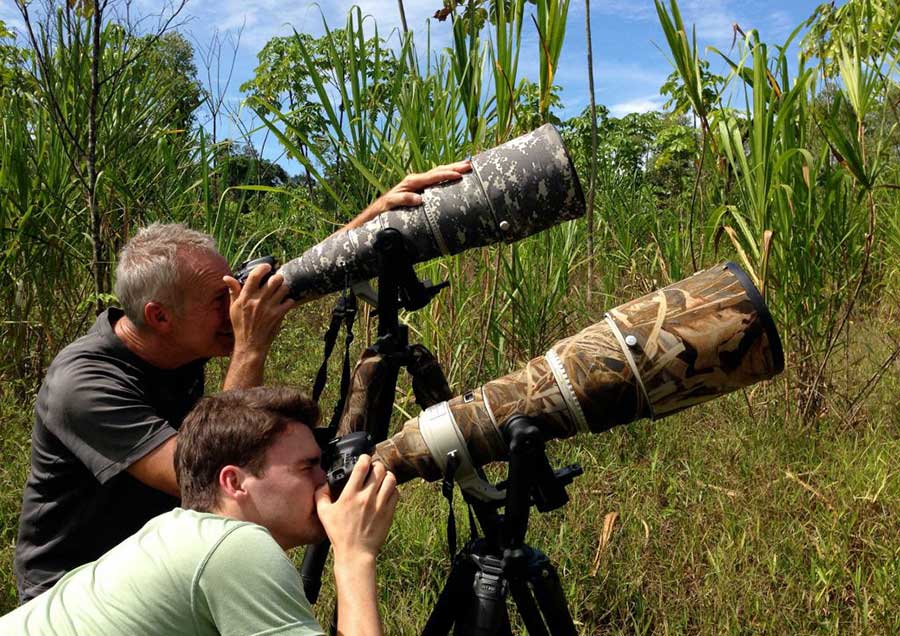
What we saw was incredibly impressive, witnessing up to 100 macaws eating clay, making red, green, blue and yellow flashes of color in the sky, screeching so loudly that you couldn’t even hear someone talking directly next to you.
There is a large variety of á-la-carte excursions guests can choose from. Upon our arrival at the lodge, we were introduced to the different options on offer and the suggestions based on the weather forecast and our interests.
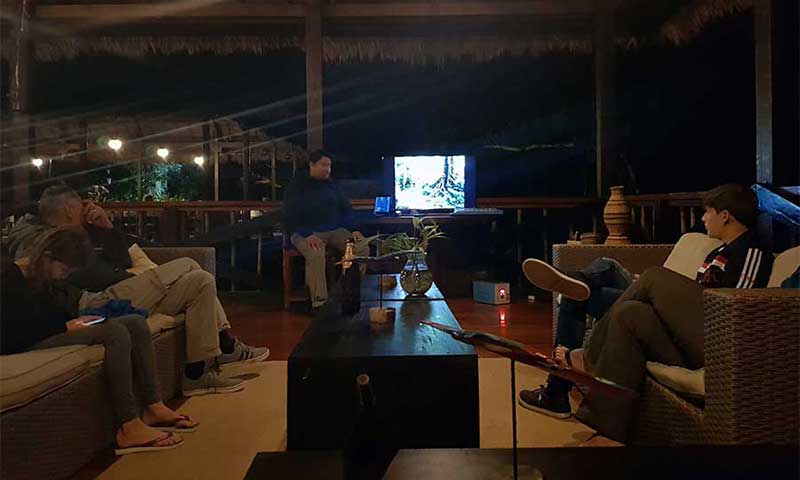
Some of the activities at TRC include:
Activities are offered 4 times a day - early morning, morning, afternoon and evening (in English or Spanish). All excursions have a maximum of 6 people except for the Colorado Macaw Clay Lick and sunset cruise, where the max number of participants is 10, and the evening lecture.
There are German-, Italian- and French-speaking guides, but availability is subject to confirmation (we requested a German-speaking guide 6 months before our arrival). Experienced guides that specialize in photography, biology or birding can also be arranged and are subject to a price supplement.
In the past, an in-depth exploration of the Peruvian cloud forest implied a sacrifice in comfort. This gap has been filled now by TRC. Its long-awaited 16 new rooms in 3 different categories were launched in 2018 (check out our videos in the following links):
All of the newly added rooms can be found in their new wing. The former basic rooms (8) in the main building were refurbished and now include an en-suite bathroom, consequently reducing the bedroom area, and are part of the ‘starting category’, namely the ‘superior rooms’ (21 m²).
We were lucky enough to get the ‘Deluxe Suites’ (with an area of 84 m²) for our stay.
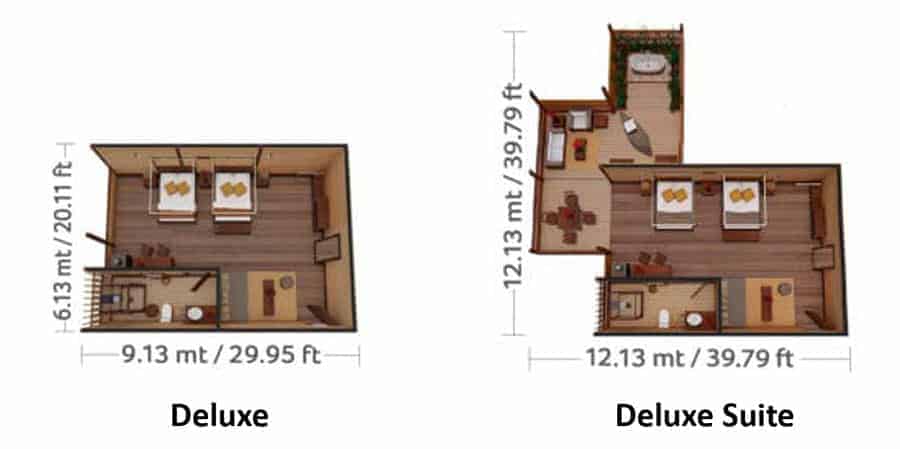
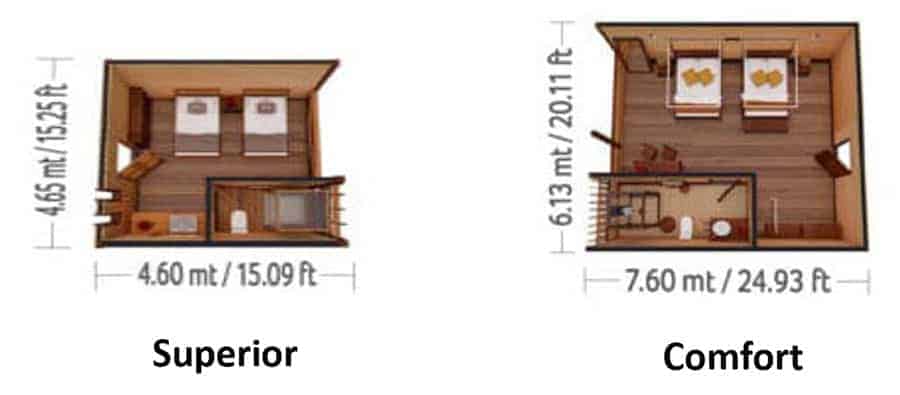
The Deluxe Suite features:
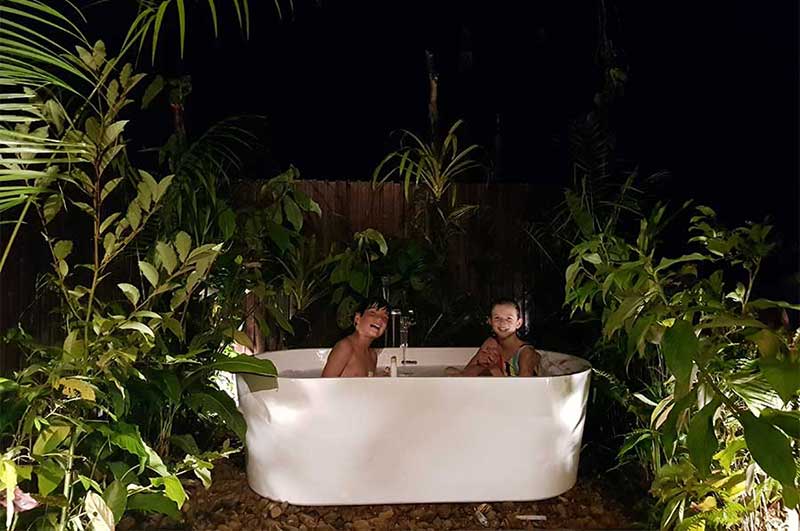
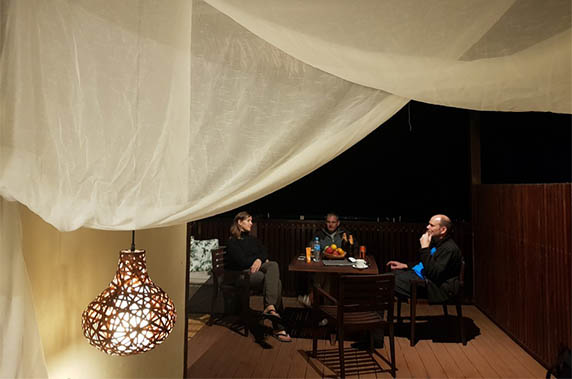
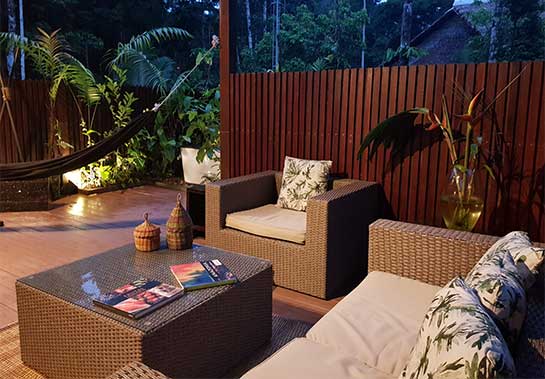
All meals are included during your stay and served buffet style for all guests in the main dining room.
Drinkable water can be found throughout the lodge, from many dispensers and pitchers as well as instant coffee and tea. Don’t forget to pack your water bottle.
Electricity is given in common areas three times per day (6am to 8am, 12am to 2pm and 5pm to 10pm)
The internet connection at the lodge might vary depending on the current weather conditions and number of guests connected. We rarely had a chance to check our smartphones. After the afternoon excursion, there was some time to shower and have a short rest before dinner. Afterwards we wanted to make to most of our stay and opted for either a night walk or the evening lecture.
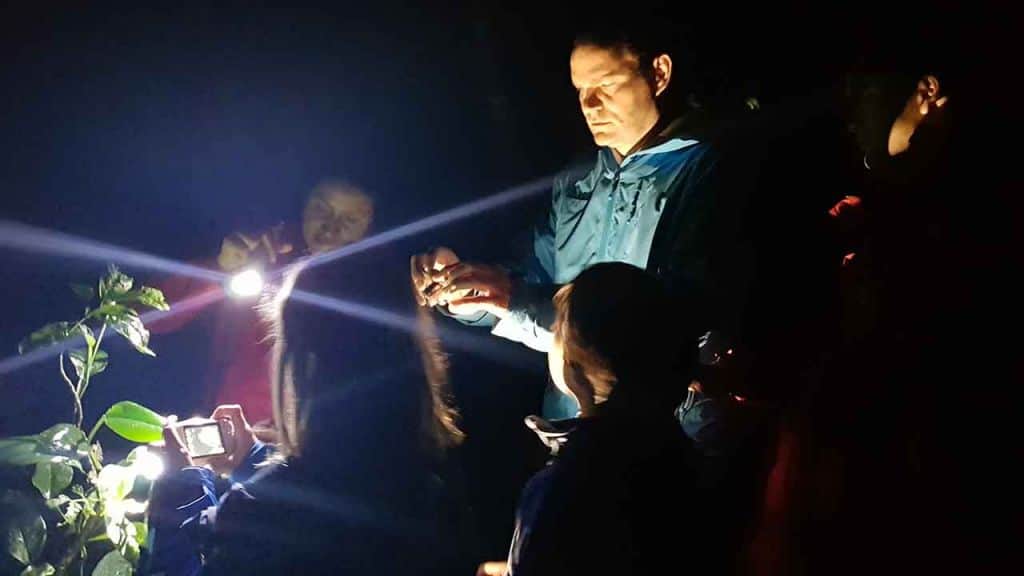
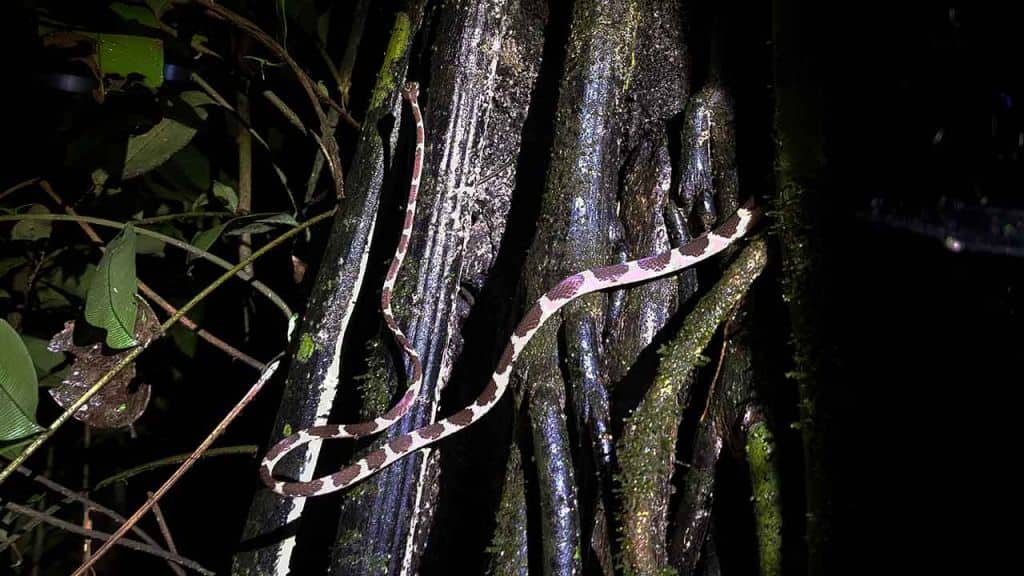


As the first and the last day are pretty much spent traveling, we recommend at least a 4-night stay. This increases the odds of being able to watch the macaws at the Colorado clay lick.
The lowland rainforests of Tambopata lie far enough south of the Equator to provide a cooler, drier winter season between May and October. Generally, temperatures in Tambopata are warm and humid. The average daytime high temperature is between 24°C and 31°C, while the average nighttime low is between 20°C and 24°C.
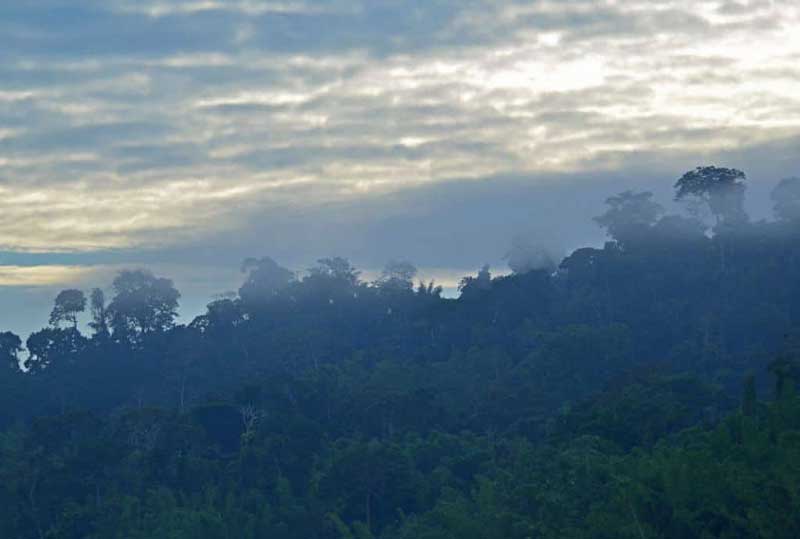
From May through September, cold fronts can sweep into the cloud forest and push daytime highs down to 9° C and the nighttime lows to 5° C. Make sure that you prepare something for the potential cold and drizzle (which is what happened to us). Regardless of the month you are traveling (and as the weather gains unpredictability worldwide) be sure to pack a raincoat and a fleece jacket along with your light-colored, long cotton pants and long-sleeved, light-colored cotton shirts.
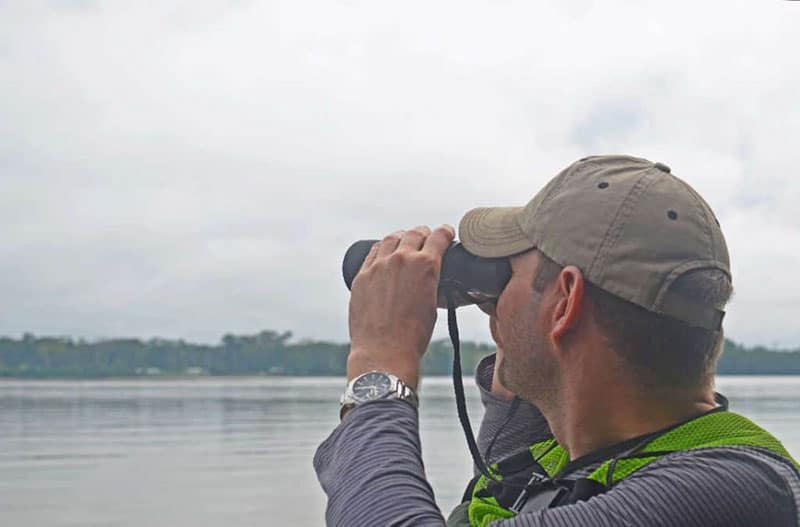
From November through April, be prepared for rain that could potentially continue for hours or days. Around 80% of the annual average 3000 mm of rainfall occurs during this season. The pros of the rainy season are that there is a much higher bird activity. Macaws are more active on the clay licks and they are nesting. Further fewer fellow travelers visit Tambopata in this season. Ponds and temporal wetlands that form during this season can also make it easier to spot reptiles and amphibians.
We could see different monkey species throughout, despite the rain. The seasonal climate changes drive the fluctuations in the annual food supply for parrots and macaws (flowers and fruits). Food availability is apparently lowest at the end of the rainy season (November through April) and early dry season (March through July) and highest in the early to mid-wet season (December and January).
Around the lobby, you will be able to find racks with rubber boots. You can use these boots for walks or outings into the forest. During the rainy season, the corridors to your rooms will get wet so be sure to pack some light anti-slip slippers to avoid getting your socks wet.
